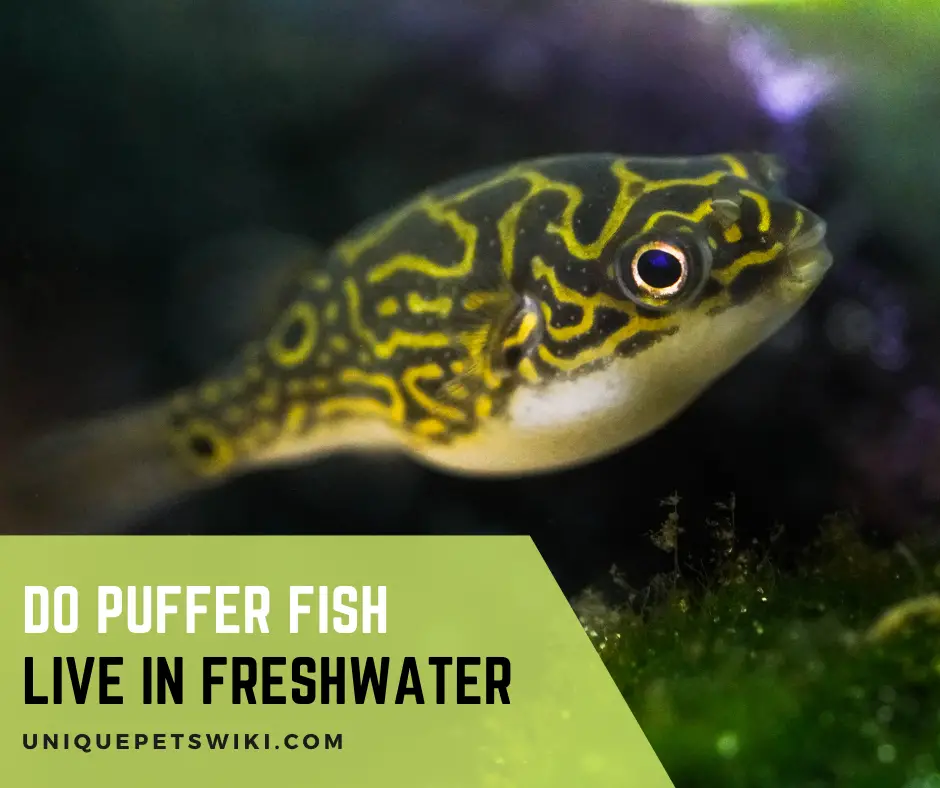Pufferfish are fascinating creatures and more and more aquarium hobbyists are keeping them as pets. But where do pufferfish come from? Do Pufferfish live in freshwater?
This popular aquarium fish is easily found in pet stores, but in the wild, they are found in various parts of the world.
If you are asking the question ‘where do pufferfish come from’ and want to know if pufferfish live in seawater or freshwater, then read on, this guide is for you.
Contents
Do Puffer Fish Live In Freshwater?
Pufferfish are found in the Atlantic, Pacific, and Indian Oceans. Some even swim up to the places where salty sea water meets the river waters and live in these brackish waters.
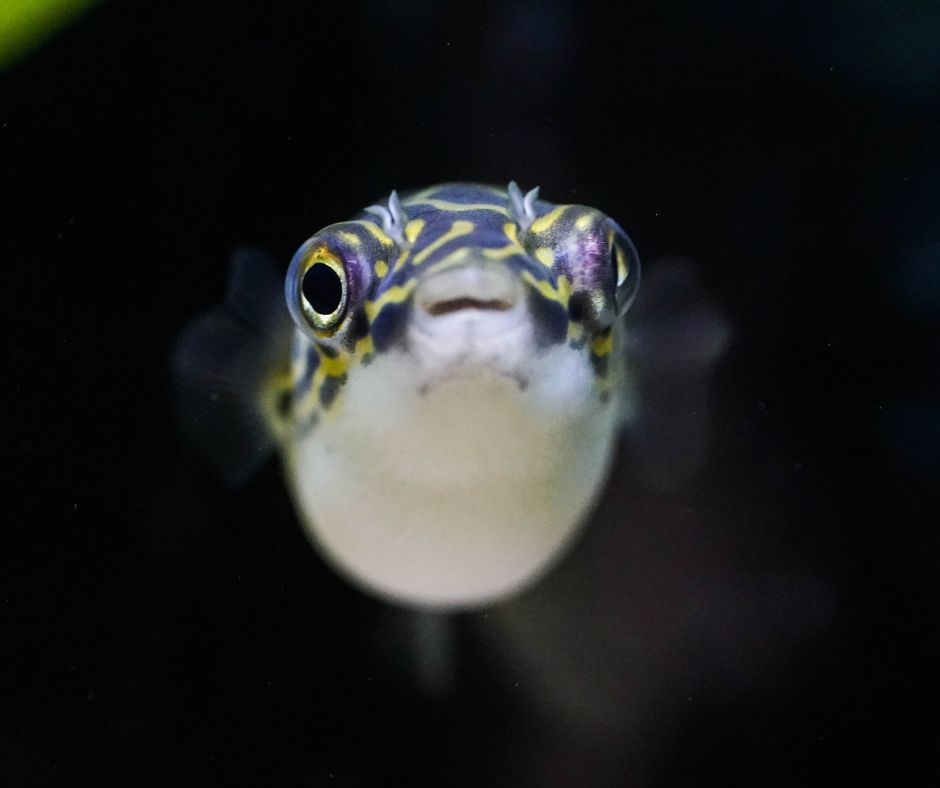
Some species swim up to the rivers and live in freshwater. So, the answer to the question: do puffer fish live in freshwater is yes. There are many varieties of pufferfish that only live in freshwater.
These varieties are mainly found in the tropics and subtropics, so you’d find freshwater pufferfish in the rivers of South America, Africa, and South Asia.
Where Do Puffer Fish Live?
Pufferfish have varied habitats. Mostly, they prefer shallow water or water that is not too deep. You might find them in coral reefs and rocks at the bottom of the sea. The coral reefs are abundant with pufferfish because they find plenty of food in them.
Adult puffer fish are more likely to be found near the land than out in the open sea. Mostly, they prefer clear water although some species thrive in muddy waters.
As mentioned before, there are freshwater pufferfish species too. It is estimated that out of almost 120 varieties of pufferfish, 30 varieties spend their entire lifecycle in freshwater, while the remaining are found in estuarine and inshore waters.
You might even find some living midway in brackish waters where rivers meet the sea. Some species even travel back and forth between different environments.
One thing is clear about pufferfish: they do not like cool water and prefer warmer temperatures. Resultantly, they are mostly found in the tropics, present in moderate numbers in the temperate waters, and not at all in the cold, frigid zones.
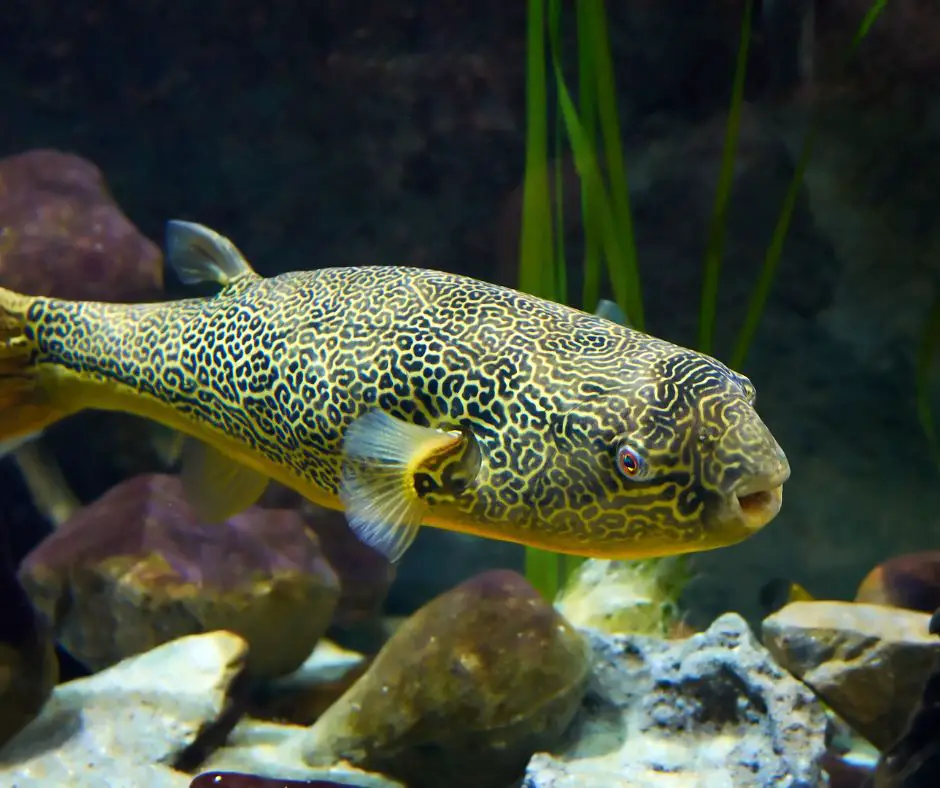
12 Popular Freshwater Puffer Fish Types
There are several varieties of pufferfish available all over the world. The freshwater varieties are popular among aquarium hobbyists as they are slightly easier to keep.
Some of the common ones are Mbu Pufferfish, Fahaka Pufferfish, Red-Eyed Red Bellied Pufferfish, Dwarf pufferfish, etc. These are kept by aquarium hobbyists.
The following table shows 12 of the most popular freshwater pufferfish species.
| Name | Other Names | Habitat | Appearance | Behavior | Tank mates |
| Fahaka Pufferfish | Coral Butterfly, Striped puffer, Nile puffer | Freshwater, large rivers, brackish, demersal, weed beds | Scale-less body, beak-like mouth, stripes on the body | Highly aggressive | Best housed alone |
| Malabar pufferfish | Dwarf Indian Puffer/Pea puffer | Slow moving freshwaters | Oblong body, the upper part is greyish, the lower body is lighter. Black oval patches on the body present | Aggressive, harmless to humans | Other Malabar Puffers |
| Golden Puffer | Avocado Puffer, Bronze Puffer | Medium to large rivers. Found mostly in Asia | Has an unusual shape and iridescent gold/green body color | Semi-aggressive | Other Golden pufferfish |
| Greenbottle Pufferfish | Emerald Puffer/Bottlegreen gold Pufferfish | Flowing waters of rivers and streams | Upperlip projects beyond the lower lip. Bottle green in color with white belly | Aggressive, not at all a community fish | Best housed alone |
| Redeye Puffer | Red-bellied Puffer | Medium-to-large rivers | Oblong, laterally compressed bodies. Species can change color based on the environment. Iris of the eye is blood red | Very aggressive | Their own kind or invertebrates |
| Hairy Puffer | Pao Baileyi | Tropical freshwater, Mekong Basin | Covered with epidermal outgrowths or cirri. Golden or orange color without markings | Aggressive and territorial | Own species |
| Red-tail Dwarf Puffer | None | Submerged bank vegetation in rivers | Both sexes have red eyes and red tail fins | Less aggressive | Can be maintained alone or in a group of peaceful schooling cyprinids |
| South American Puffer | Banded puffer, parrot puffer | Amazon River in Brazil | Green above, white below with thin black bands on the back | Aggressive | Best housed alone |
| Target Puffer | Twin Spot Puffer or Eyespot puffer | Found extensively in flowing and standing waters of the lower Mekong river. Chad Basin, Nile, etc. | Eyes with silver sheen outlined with bright red ring | Highly aggressive | Species tank, or with fast swimming fish that keep to themselves |
| Mbu Puffer | Giant puffer, Giant freshwater pufferfish | Large rivers, lakes, and estuaries | Massive size up to 60 cm/23 inches in length | Aggressive | Need a large tank preferably housed alone |
| Imitator Puffer | Dwarf Malabar Puffer | Shallow streams and rivers of the Western Ghats of India | Smallest pufferfish yellow-orange in color with dark blotches | Aggressive | With its own kind |
| Ocellated Puffer | None | Rivers in Asia | Greenish golden color with lighter bellies | Very aggressive | Best housed alone. |
Are Freshwater Puffer Fish Poisonous?
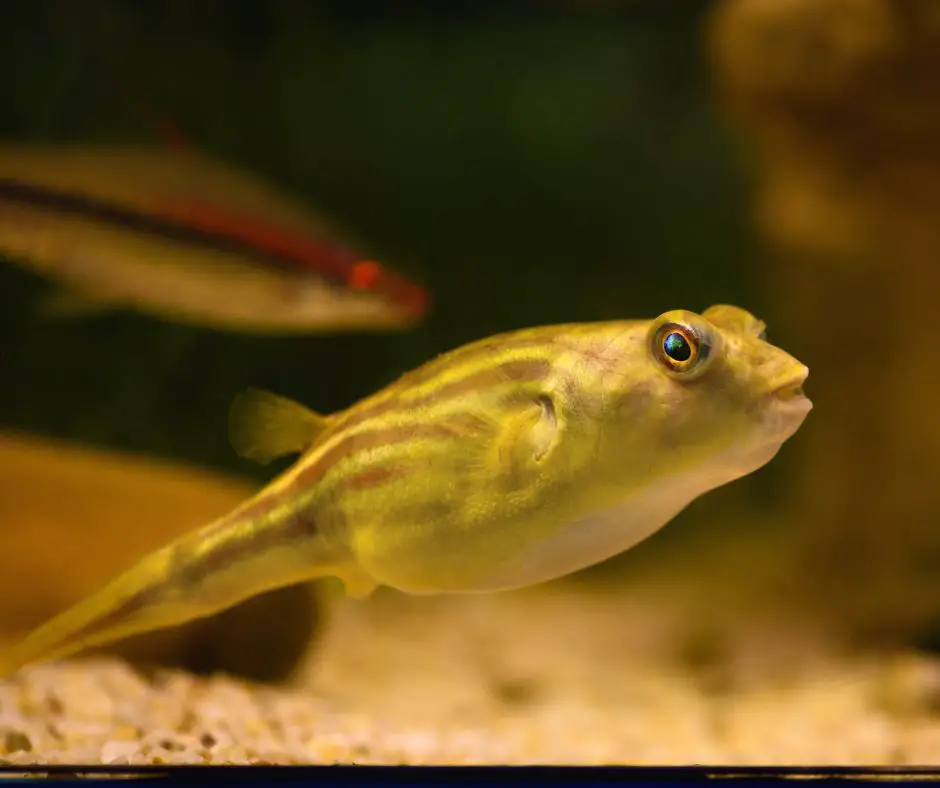
Yes. Many varieties of freshwater pufferfish are toxic or poisonous if consumed. For example, Saxitoxin in freshwater pufferfish in Thailand was known to cause severe food poisoning symptoms in people who ate it at a restaurant.
Not all varieties of pufferfish are poisonous though. It is also important to note that the toxin is produced in the pufferfish’s organs due to the diet it eats in the wild. In captivity, if your freshwater pufferfish does not get this specific and varied diet, so the chances are that it is not able to produce tetrodotoxin at all.
However, it is safe to assume that almost all freshwater pufferfish are poisonous.
Water Requirements for Freshwater Puffers
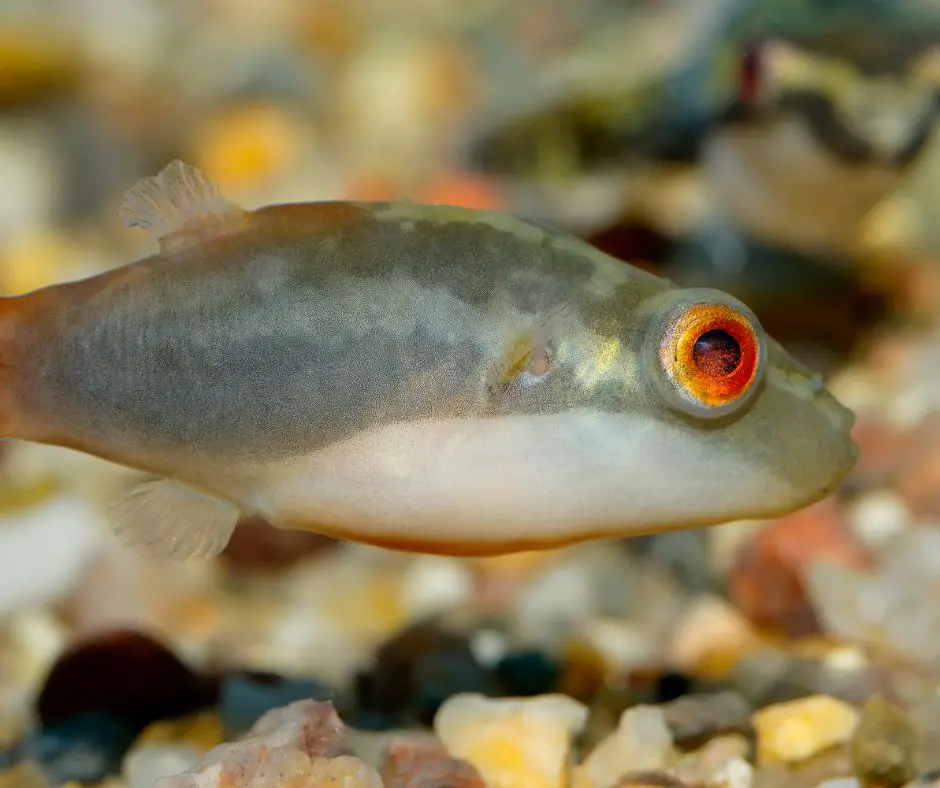
If you plan on keeping a freshwater pufferfish as a pet, it is very important to study it carefully. Determine the exact water parameters (pH, temperature, etc.) your particular species needs. This is very important for your pet’s survival.
Here are some approximate water parameters for most freshwater pufferfish.
- Water pH – Freshwater pufferfish need water with no salt and with a pH between 7.0 and 7.6.
- Water-flow – This varies from species to species. However, most require moderate to fast-flowing water so you’d need some rotating power heads to create a current in the aquarium.
- Water hardness – This needs to be between 8 to 12 dKH (dKH is the measure of carbonate hardness).
- Temperature – Freshwater puffers need water temperature between 74 and 78 F.
- Ammonia – Pufferfish are very sensitive to ammonia. It should always be 0 ppm.
- Nitrites – Nitrite levels above 0.75 ppm in water can be very stressful to puffers.
- Nitrates – Nitrate levels from 0 – 40 ppm are usually safe for puffers, but less than 20 ppm is always safer.
- Oxygen – a dissolved oxygen content of 5-7 ppm is adequate for pufferfish.
API FRESHWATER MASTER TEST KIT 800-Test
- Contains one (1) API FRESHWATER MASTER TEST KIT 800-Test Freshwater Aquarium Water Master Test Kit, including 7 bottles of testing solutions, 1 color card and 4 glass tubes with cap
- Helps monitor water quality and prevent invisible water problems that can be harmful to fish and cause fish loss
- Accurately monitors 5 most vital water parameters levels in freshwater aquariums: pH, high range pH, ammonia, nitrite, nitrate
- Designed for use in freshwater aquariums only
- Use for weekly monitoring and when water or fish problems appear
Last update on 2022-12-30 / Affiliate links / Images from Amazon Product Advertising API
Are Freshwater Puffer Fish Good Pet Fish?
Freshwater puffer fish are definitely interesting and unique pets to keep. You will never need any other conversation starter when you invite people over – the chubby and cute-looking puffer fish is all they will talk about!
However, pufferfish are definitely not good starter pets. They need plenty of care and upkeep. They also have stringent needs as far as their environment and water quality are concerned.
Without these, your delicate puffer will not thrive. They are especially very sensitive to ammonia, nitrate, and nitrite levels. Even a slight increase in these parameters could stress them out.
However, once you learn exactly what your species of freshwater puffer fish needs, then keeping one can be a highly rewarding experience.
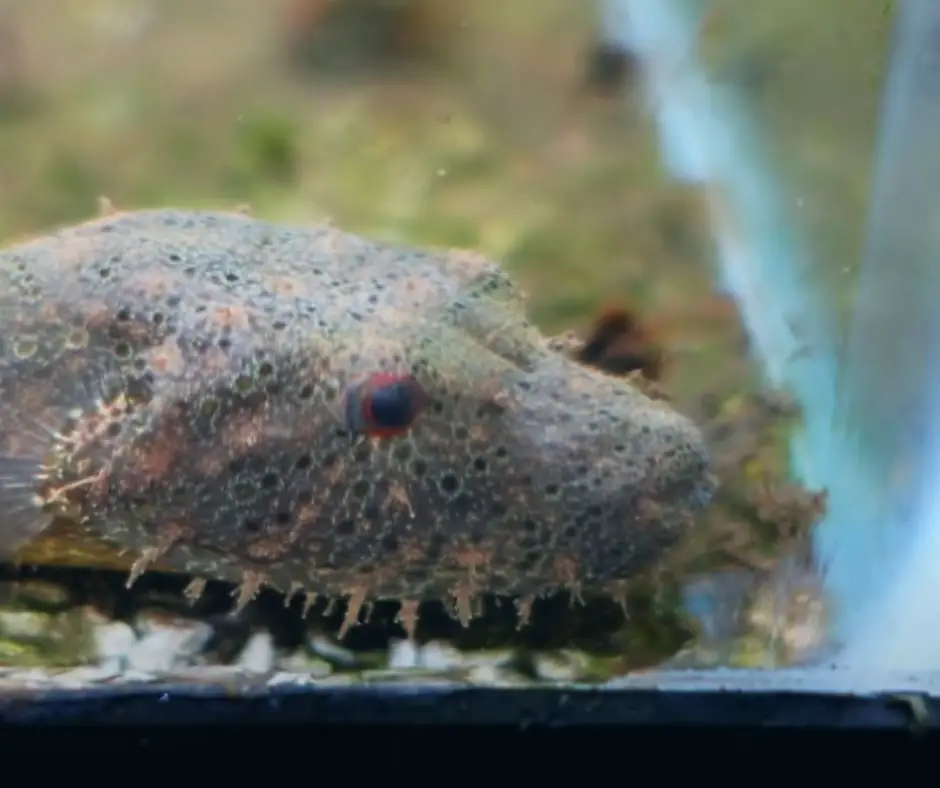
Remember: some species of puffer fish need a very large tank – larger than the average freshwater fish needs. Some species like Mbu freshwater puffer grows up to 67 cm in length!
Moreover, they are not community fish and are known to bite or nip the fins of their tank mates. So, it may be best to house them alone.
If you plan on adopting a puffer fish, please make sure it is a species meant for captivity. And whether you adopt or buy your pufferfish from a local fish/pet shop, please learn all you can about the particular species. Research the species’ exact needs. Continuously monitor your pet and make water changes as recommended.
FAQs – Do Puffer Fish Live In Freshwater
Do puffer fish live in freshwater or saltwater?
Some species of pufferfish live in salty sea water although nearly 30 varieties of pufferfish are known to live their entire lifecycles in fresh water.
Do puffer fish need salt water?
Some varieties of pufferfish need salt water. For example, the Figure 8 pufferfish needs salinity between 1.005 to 1.008.
What kind of water does puffer fish live in?
Different species of puffer fish require different kinds of water. Mostly, they prefer warm water and are abundant in tropical zones.
Also, most species are found in shallow waters. You might also find them in brackish waters, fresh waters, or inshore and in estuaries. Some live in clear water while others thrive in muddy water.
How big do freshwater puffer fish get?
Most freshwater pufferfish grow between 1 to 24 inches in length but some like the Mbu grow over 60 cm or 23 inches!
What do freshwater puffer fish eat?
Invertebrates and hard-shelled foods like snails, shellfish, and crustaceans are some of the favorite foods for freshwater puffers. They need these hard foods to wear down their ever-growing teeth.
Conclusion – Do Puffer Fish Live In Freshwater?
Yes, pufferfish can be found in freshwater. Out of nearly 120 pufferfish species, almost 30 varieties live out their entire lifecycle in freshwaters.
Many freshwater pufferfish like the Fahaka Pufferfish, Dwarf or Pea Pufferfish, and Red-Eyed Red Bellied Pufferfish are also kept by aquarium hobbyists as pets.
We hope this guide helps you learn a bit more about freshwater pufferfish.
